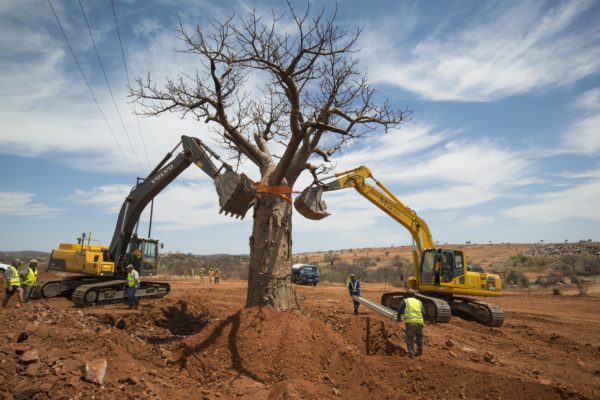SANRAL will always put road safety and the environment at the forefront of any project.

The South African National Roads Agency (SOC) Limited (SANRAL) believes in striving to give back to the land what it has taken from it, an approach it has adopted in all its construction projects.
SANRAL is responsible for delivering quality roads, and in this line of work there is always some interaction with nature.
Road flooding on R21 due to pine needles
The agency recently came under public scrutiny for cutting down trees in Ekurhuleni. The trees were growing near the R21 on the way to OR Tambo international airport. As a result, it was accused of not being considerate of the environment.
But there was a good reason for getting rid of the pine trees: the pine needles were continuously blocking grind inlets, which leads to flooding of the road. SANRAL replaced the pine trees with Karee, which will not block any inlets.
This is the way the agency works, as can be seen in the relocation of Baobab trees near Musina during the upgrading of the N1. Eleven Baobabs and 197 Shepherd trees were relocated.
Committed to preserving the environment
According to Vusi Mona, SANRAL General Manager of Communications, the agency always strives to meet the requirements as set out in Environmental Management Plan (EMP) per project.
The agency is committed to preserving the environment and the crucial role that trees play. In 2015, when trees along the R511 at the Hartbeespoort Dam had to be removed, it was done to improve the safety of road users.
In that instance, the agency obtained a permit from the Department of Forestry and Fisheries (DAFF) in Mmabatho, North West, to remove these trees. Many of them were either obstructing sight distances, were too close to the side of road or too close to structures such as concrete-lined side drains and bridges.
Mona said: “We are always considerate of the environment when building roads; whether it’s removing indigenous plants on a planned road reserve, managing stray animals crossing the road or digging-up rocks and sand for construction.
“We have an EMP for every project and it guides us to minimise or avoid adverse environmental impact.”
This goes beyond just relocating trees. A construction, area has to be fully rehabilitated so that it will be usable again. For example, if grass has been dug up, it will be replanted and maintained over time.
SANRAL always consults and acquires permits from the Department of Agriculture and Forestry to ensure that all requirements are met before construction takes place.

